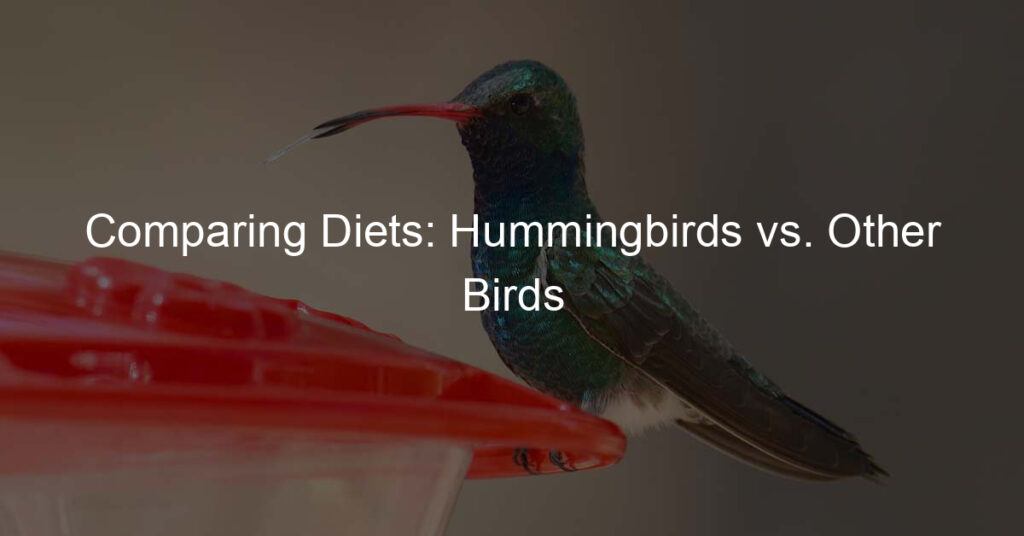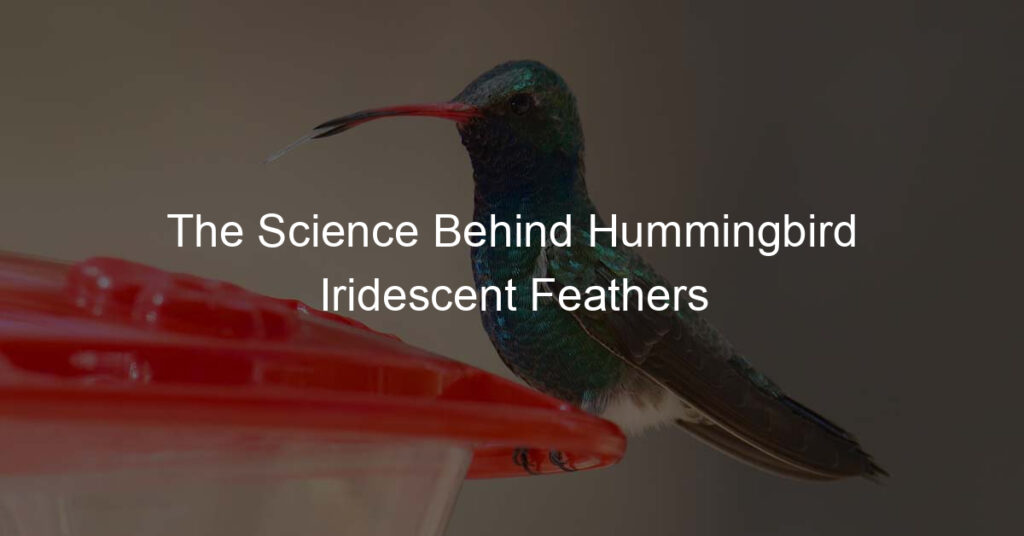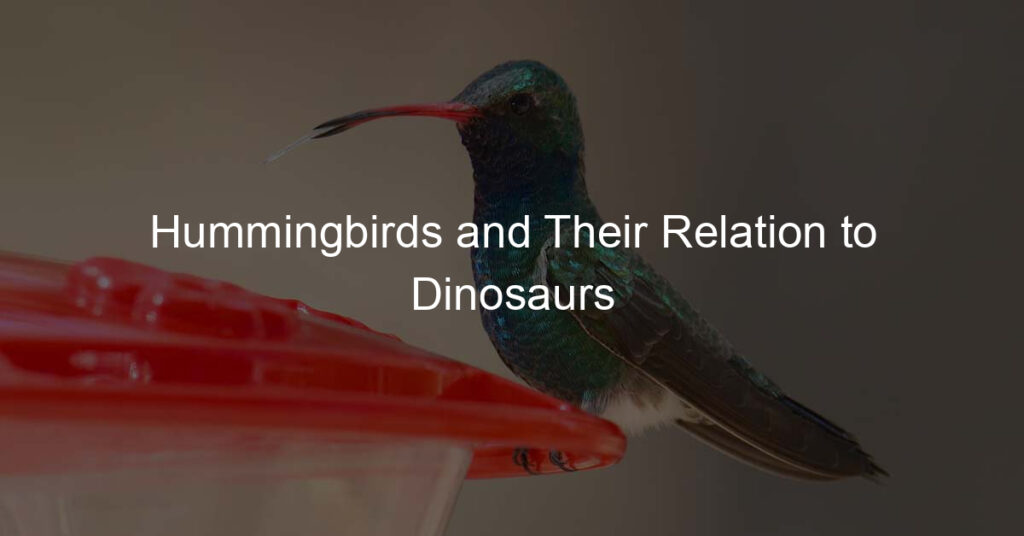Hummingbirds are truly fascinating creatures, known for their incredible ability to hover in place and their brilliant iridescent colors. What many people may not realize is that these tiny birds undertake remarkable migrations, traveling thousands of miles between their breeding and wintering grounds. This article’ll explore the intriguing details of hummingbird migration, delving into the different species, factors influencing migration, and migration patterns and routes.
These small avian wonders migrate mainly to find food and favorable climates. With over 300 species of hummingbirds, there are significant variations in the migration of each type. Some species, like the Ruby-throated Hummingbird, migrate between North and Central America, while others undertake shorter journeys. Numerous factors, such as weather patterns, daylight hours, and food availability, play a crucial role in influencing the timing and routes of these migrations.
As we delve deeper into the fascinating world of hummingbird migration, we’ll examine the unique adaptations that enable these birds to conserve energy and successfully navigate their journeys. We’ll also look into the conservation challenges these remarkable creatures face and how scientific advancements in tracking technology have helped us better understand and protect hummingbird populations.
Key Takeaways
- Hummingbirds undertake impressive migrations, with variations in routes and distances among the more than 300 species.
- Numerous factors, including weather patterns and food availability, play a significant role in influencing hummingbird migration.
- Scientists use tracking and research methods to study and protect these captivating birds during migratory journeys.
Hummingbird Migration Overview
I’ve always found hummingbird migration to be a fascinating topic. These tiny birds travel long distances yearly between their breeding grounds in North America and their wintering grounds in Central and South America. This incredible journey allows them to escape extreme temperature changes and find food sources all year round.
During their migration, hummingbirds can cover distances of up to thousands of miles, even though they weigh only three to four grams. To prepare for such demanding journeys, they often double their body weight in fat, fueling their flights. What amazes me even more, is their ability to navigate accurately and remember specific locations from previous migration trips.
The timing of hummingbird migration varies depending on the species and location. In North America, some species, like the Ruby-throated Hummingbird, begin their migration around March, while others, like the Rufous Hummingbird, start in February. In general, hummingbirds start to migrate with the onset of warmer temperatures and longer daylight hours, which signal the availability of food and suitable breeding conditions.
It’s important to note that not all hummingbirds migrate the same way. Some species, such as the Anna’s Hummingbird, don’t migrate at all and can be found year-round in specific regions of North America. Others, like the Black-chinned Hummingbird, may have shorter migration routes within the continent.
In conclusion, hummingbird migration is a complex and impressive process that allows these small yet resilient birds to survive and thrive in various environments across the Americas. Studying their migration patterns can provide us with valuable insights into their behavior, ecology, and conservation needs.
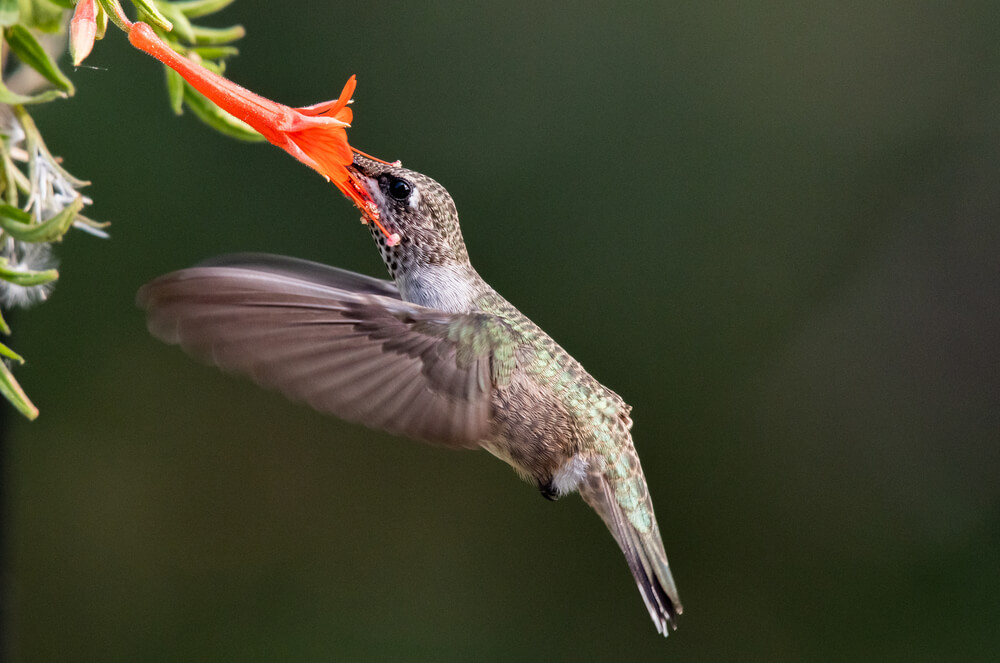
Different Species of Migratory Hummingbirds
As a knowledgeable bird enthusiast, I have observed various species of migratory hummingbirds that each have distinct characteristics and behaviors. These fascinating tiny birds captivate my attention with their vibrant colors, rapid wing movement, and unique migration patterns. Here, I will share information on some of the most well-known migratory hummingbird species.
Ruby-throated Hummingbird: As the only breeding hummingbird species on the eastern side of North America, the Ruby-throated Hummingbird is a special sight to see. They migrate to Eastern Mexico and Central America during winter, returning to their breeding grounds in late March to early April.
Rufous Hummingbird: These energetic birds possess an admirable drive for migration. Rufous Hummingbirds travel vast distances from their breeding grounds in Alaska and Canada to their wintering sites in Mexico. They are known for their bold behavior, often spotted chasing other hummingbirds away from their territories.
Black-chinned Hummingbird: Preferring arid habitats, the Black-chinned Hummingbird breeds in the western United States and migrates to Central Mexico for the winter. They are quite fascinating, as the males display a stunning iridescent purple band beneath their black chins when the sunlight hits just right.
Anna’s Hummingbird: I’ve observed that Anna’s Hummingbirds are unique among their peers because some populations remain year-round along the Pacific Coast, from Alaska to Baja California. However, other populations do migrate, making them a fascinating study.
Here are a few more migratory hummingbirds worth mentioning:
- Broad-tailed Hummingbird: These birds breed in the mountains of the western United States and migrate to Mexico and Central America in the winter.
- Calliope Hummingbird: Known as the smallest long-distance migratory bird in North America, the Calliope Hummingbird breeds in the northwestern United States and western Canada before heading to Mexico for the winter season.
- Costa’s Hummingbird: Close relatives of Anna’s Hummingbirds, Costa’s Hummingbirds mainly inhabit the southwestern United States and parts of Mexico, migrating short distances if needed.
- Allen’s Hummingbird: Breeding along the coastal regions of California and Oregon, Allen’s Hummingbirds migrate to Mexico during the winter months. They are similar in appearance to Rufous Hummingbirds but with distinct markings.
- Buff-bellied Hummingbird: Found in coastal Texas and northeastern Mexico, Buff-bellied Hummingbirds migrate southward in the winter months.
- Lucifer Hummingbird: Inhabiting parts of the southwestern United States and Mexico, these intriguing birds undertake short migrations in response to various environmental factors.
- Magnificent Hummingbird: As the name suggests, these birds are truly breathtaking. Magnificent Hummingbirds breed in the southwestern United States, Mexico, and Central America, sometimes migrating short distances within these regions.
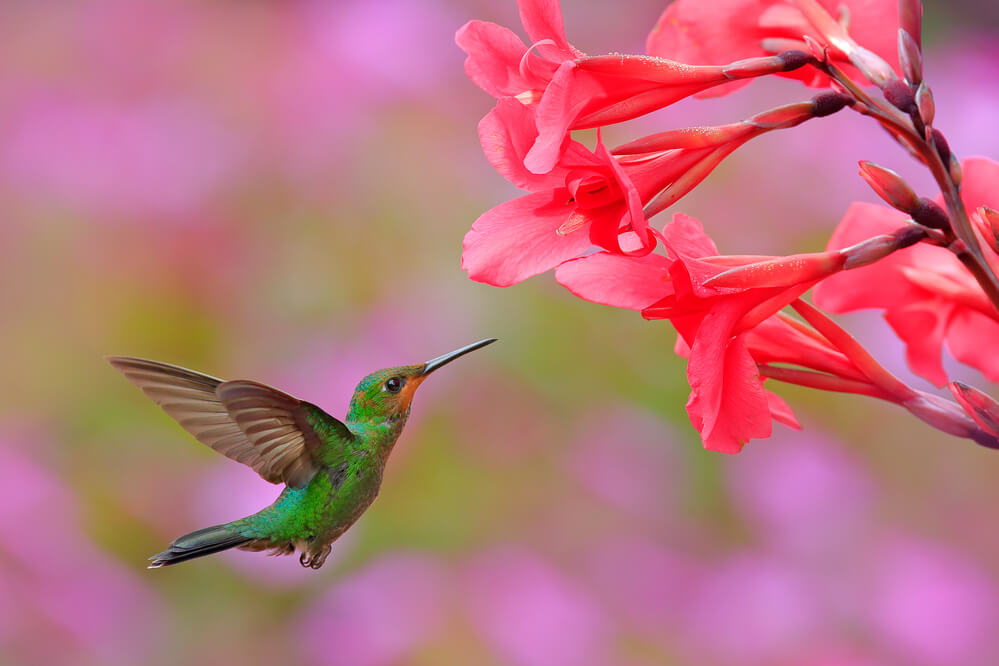
Studying these migratory hummingbirds always leaves me amazed by their perseverance, endurance, and fascinating behaviors.
Factors Influencing Migration
When I think about hummingbird migration, several factors play a significant role in determining when and how these tiny birds embark on their long journeys. In this section, I will briefly discuss some key factors influencing hummingbird migration.
Firstly, seasons have a critical impact on migration patterns. As the temperatures begin to drop in their breeding grounds during the fall, hummingbirds instinctively start to migrate in search of warmer climates. Once it’s time for spring to arrive, the birds return to their breeding grounds to raise their young.
Daylight is another important factor. As the length of daylight hours increases, it serves as a signal for hummingbirds to begin their migration. This is likely related to an innate biological clock that guides them when it’s time to depart.
Weather conditions also play a crucial role in influencing hummingbird migration. Favorable weather means less energy expenditure during travel, which is especially important for these small birds with high metabolism rates. Hummingbirds prefer to travel on clear days with little wind to avoid losing the precious energy reserves they need for their long journeys.
Energy reserves are essential for a hummingbird’s survival during migration. Prior to their departure, these birds substantially increase their food intake to build up their body fat. This fat is an energy source during their arduous journey, allowing them to travel long distances.
The availability of food sources, specifically flowers, and nectar, also affects the migration of hummingbirds. These birds heavily rely on nectar as a primary energy source during their journeys. Therefore, their migration route often follows the flowering patterns of various plant species. Insects, which are another part of their diet, become more abundant during warmer months, making it an ideal time for migration.
Finally, age also plays a role in the migratory patterns of hummingbirds. Young birds that have just fledged may not depart on their first migration until a few weeks after the adults have already set off. This delay gives them time to gain strength, develop their flight skills, and build up their energy reserves for the long journey ahead.
In conclusion, hummingbird migration is a complex process influenced by various factors, including seasons, daylight, weather conditions, energy reserves, and the availability of food sources. Understanding these factors helps us better appreciate the incredible journeys these tiny birds embark on each year.
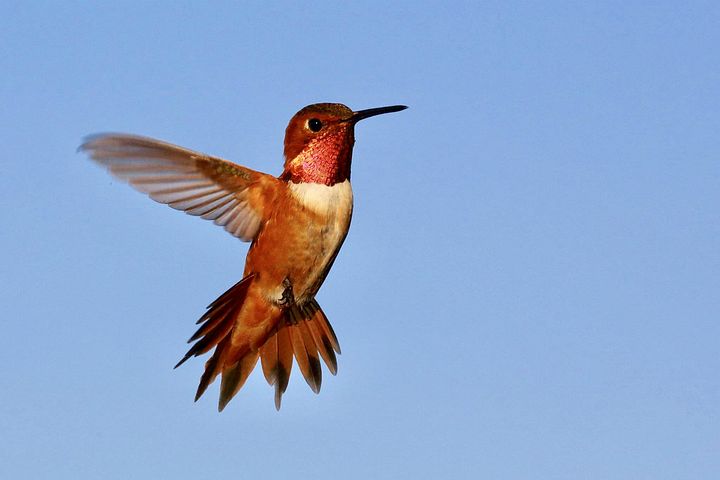
Spring Migration
During spring migration, I can observe hummingbirds heading north from their wintering grounds in Central and South America. As the days begin to get longer, their internal clocks tell them it is time to migrate. The males start moving first, followed by the females a few weeks later.
As I watch their journey north, I notice that they often follow the emerging spring bloom, as nectar from flowers is their primary food source. Their trek begins near the Gulf Coast. It is fascinating to see them rest and refuel in the Yucatan Peninsula before crossing the Gulf of Mexico, an incredible non-stop journey of around 18 to 24 hours.
Upon arrival at their breeding grounds, the males establish their territory and avidly defend it. They position themselves in areas rich with nectar-producing plants in an effort to attract females. Once both sexes have arrived, they waste no time getting down to nesting and breeding.
During spring migration, some factors can delay or alter the hummingbirds’ journey. For example, they may choose to remain for an extended time near the Gulf Coast if there is an abundance of available food. Weather patterns, such as strong winds or heavy precipitation, can also cause temporary setbacks.
Taking into account the factors mentioned above, it’s clear that spring migration is an essential and thrilling part of the life cycle of hummingbirds. These tiny creatures are masters of endurance and display an impressive ability to navigate vast distances in search of breeding grounds and abundant food sources.
Fall Migration
During fall migration, I observe a fascinating phenomenon in which hummingbirds, specifically the Ruby-throated and Rufous species, make their way to warmer climates as winter months approach. This is the time when they migrate thousands of miles, traveling from North America to South America.
In my experience, fall migration typically begins in August and continues through October, depending on factors such as climate and location. As I watch these tiny birds flock together, I notice that they often follow a specific path, commonly along the western coast of the United States. From there, they oftentimes continue down to Central and South America, with stops in Mexico and Panama.
While tracking these hummingbirds’ migration, I discovered that Texas, Louisiana, and Florida are popular stopover points during their long journey south. These locations provide the necessary resources, such as food and water, allowing the birds to replenish their energy reserves before continuing their journey.
Based on my observations, I identified a few key traits in the hummingbirds’ fall migration behavior:
- Long Flights: With distances up to 2,000 miles, these birds must make strategic stops to refuel, with some even flying nonstop for 18-22 hours.
- Lone Travelers: Unlike many bird species, hummingbirds do not form large migratory flocks, rather opting to travel solo or in smaller groups.
- Resource Dependence: These small birds require abundant food sources, particularly nectar-producing plants, insects, and spiders, to maintain their energy levels throughout their journey.
Fall migration is a complex and fascinating aspect of hummingbird behavior, showcasing the resiliency and adaptability of these diminutive creatures in the face of changing seasonal conditions.
Feeding and Energy
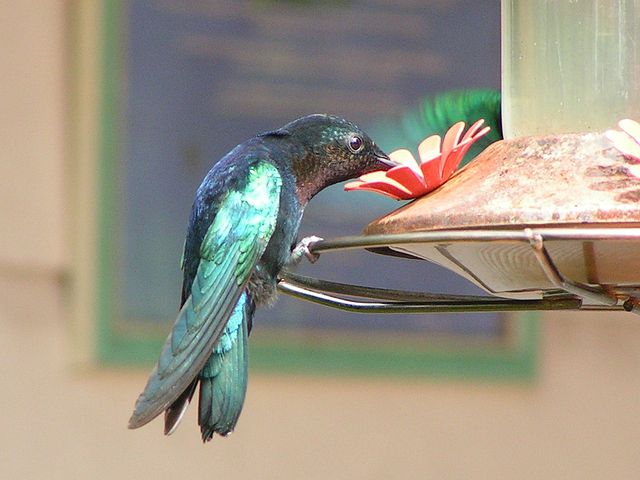
During hummingbird migration, feeding, and energy conservation are essential aspects for these little travelers. I’ve observed that hummingbirds primarily consume nectar, which is a sweet liquid derived from flowers. This is because nectar is an excellent energy source with high sugar levels.
In my experience, hummingbirds get most of their energy for daily activities and migration from the sugar in nectar. However, that’s not the only food they consume. They also eat insects and spiders, providing them with the necessary protein, fat, and other nutrients they require for growth and tissue maintenance.
As a bird admirer, I often set up hummingbird feeders in my garden to provide extra nourishment for these migratory birds. These feeders are designed particularly for hummingbirds, using a mixture of sugar and water as a nectar substitute. However, I ensure the ratio is well-balanced to ensure they get the right amount of energy they need during migration.
It’s also interesting to note that hummingbirds have an extraordinary ability to conserve energy during nighttime when they enter a state called torpor. In this state, their body temperature drops, and their metabolic rate slows down significantly, which helps them preserve vital energy needed for the next day’s activities.
To sum up, the crucial components of a hummingbird’s diet during migration include nectar, insects, and spiders. These food sources fuel their journey by providing the necessary energy, sugar, fat, and other nutrients. As an enthusiast, I support these little travelers by providing hummingbird feeders in my garden, ensuring they receive adequate energy along their migratory paths.
Migration Patterns and Routes
As a keen observer of hummingbirds, I’ve noticed that their annual migration pattern is a complex and fascinating subject. These small but mighty birds travel vast distances between their breeding and wintering grounds, making remarkable journeys across continents.
Typically, hummingbirds in North America breed as far north as Canada and then migrate to Mexico, Central America, or Panama to spend the winter months. Their migration routes can be divided into two general paths: one that takes them through the western states and another that leads them across the Pacific Northwest.
I have seen that the western route starts from the western states of the US, mainly following the Rocky Mountains, and continues southward into Mexico. This route proves advantageous for the birds, as they can find abundant nectar resources and nesting sites along the way.
The Pacific Northwest route, on the other hand, follows a coastal journey from the northwestern states down to Mexico and the Yucatan Peninsula. Utilizing this route exposes the birds to more maritime climates but provides access to ample feeding opportunities.
While observing the migration process, I found it intriguing that many hummingbirds can travel non-stop for up to 18 hours, covering distances of up to 500 miles in a single flight. To fuel this remarkable journey, hummingbirds rely heavily on their ability to consume large quantities of nectar since they need to store enough fat to sustain their energy output during migration.
Here’s a brief overview of some of the hummingbirds’ migration patterns and routes:
- Western States Route: Rocky Mountains ➡ Mexico
- Pacific Northwest Route: Northwestern States ➡ Mexico, Yucatan, and Panama
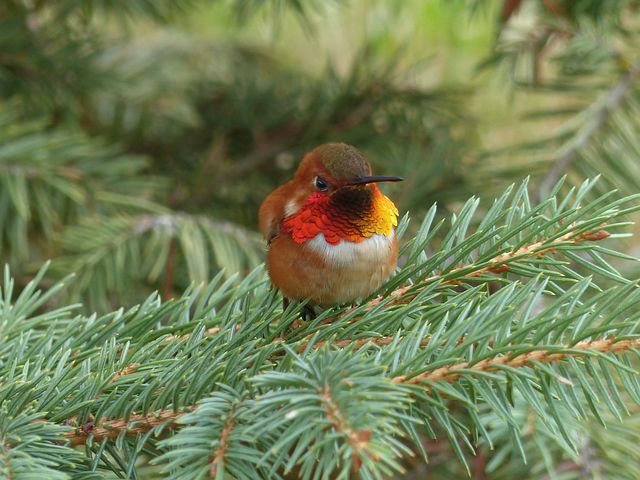
Hummingbirds must overcome numerous challenges throughout both migration paths, including adverse weather conditions and predation risk. Despite their size, these incredible birds display remarkable resilience and strength, ensuring their survival and the continuation of their species.
Adaptations for Successful Migration
As a hummingbird, I have developed specific adaptations to support my long migrations, with one of the most essential being my ability to fly. My wings are designed to allow quick acceleration and swift changes in direction, making me an agile and efficient flyer.
Before migration season, I undergo hyperphagia, where I eat excessively to increase my body weight by as much as double its normal size. This added weight provides me the energy required to endure the longest migration of any bird species. While hummingbirds like me are known for our vibrant colors, these hues do not impede our migration; they help us locate food sources along our journey.
During migration, I take advantage of torpor, a state of temporary hibernation that significantly reduces my energy consumption. Torpor is essential since energy conservation is crucial during the long flights. In this state, my body temperature drops, and my metabolism slows down, permitting me to save valuable energy and increase my chances of reaching my destination successfully.
Some additional adaptations include:
- Varied wing shapes: My aerodynamic wings allow for efficient hovering and improved energy consumption during flight.
- Compact body size: Having a small body weight helps me stay buoyant in the air and lowers the amount of energy expended during migration.
- Advanced spatial memory enables me to remember key locations, such as food sources and resting spots, on my migratory routes.
- Efficient respiration: I possess the remarkable ability to breathe and exchange oxygen quickly, accommodating long-distance travel and high-altitude flights.
These adaptations equip me with the necessary skills and resilience to cope with the challenges that arise during my migratory journeys. With such traits in place, I can ensure a successful migration each year and continue to captivate admirers worldwide.
Tracking Hummingbird Migration
I track hummingbird migration by observing and recording sightings, using a combination of personal observations and data from other hummingbird enthusiasts. I find that keeping a log of hummingbird sightings, including the date, location, and species observed, helps create a comprehensive picture of the migration trends.
One useful tool I employ is an interactive map displaying hummingbird sightings. This map allows me to see at a glance where different species of hummingbirds have been spotted during their migration, which helps me better understand the routes they take and the variations in their migratory patterns.
In addition to personal observations, I incorporate data from banding records. Banding is the process of attaching a small, uniquely numbered metal or plastic band around a bird’s leg for identification and tracking purposes. By examining hummingbird banding records, I can gain insight into previously undocumented aspects of their migration.
Energy is an important factor in hummingbird migration. As these tiny birds consume massive amounts of energy during their travels, understanding the role of energy in their migration helps me create a more accurate picture of their journey. I take note of the availability of food sources such as nectar-producing flowers and feeder offerings along migration routes.
In summary, tracking hummingbird migration is a multifaceted process that relies on various sources, including sightings, hummingbird sightings, interactive maps, banding records, and an understanding of the energy dynamics involved in this incredible journey. Applying a confident, knowledgeable, neutral, and clear approach, I strive to present a comprehensive picture of hummingbird migration that remains as accurate and useful as possible.
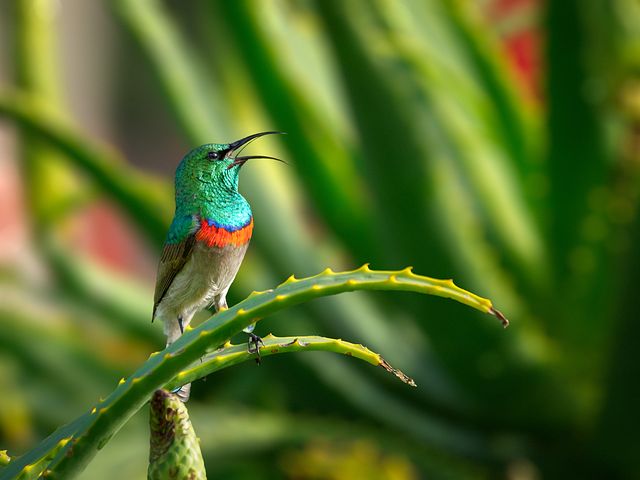
Conservation and Migration Challenges
While researching hummingbird migration, I discovered some major challenges these small birds face, especially concerning conservation and migration. Weather patterns play a significant role in their journey, as they rely on warm temperatures and suitable conditions for flying. Unpredictable weather can make it difficult for hummingbirds to find appropriate nesting materials and food sources along their migration routes.
I observed that energy reserves are critical for hummingbirds because they have a high metabolic rate and consume large amounts of nectar and insects. The abundance of flowers along migration routes directly influences their ability to maintain energy levels. A decline in flower populations can potentially disrupt hummingbird migrations, as they rely on this food source to fuel their long journeys.
Another challenge I found is human infrastructure, such as oil rigs and tall buildings. These structures can disrupt hummingbird flight patterns, adding pressure on their already demanding migration routes. Small birds like hummingbirds often collide with these obstacles, leading to injury or death.
In addition to human-related obstructions, hummingbirds face competition from other bird species in search of similar resources. They compete for nesting materials and food sources, making the migration journey even more challenging. It is essential for conservation efforts to consider these factors and work towards supporting a healthy ecosystem that benefits hummingbirds and various other bird species that rely on the same resources.
While researching, I recognized that land use changes also impact hummingbird migration. The loss of habitat due to urbanization and agricultural expansion limits the availability of nesting sites and food sources. This affects not only hummingbirds but also many other bird species that depend on specific habitats for survival.
Frequently Asked Questions
What is the typical distance covered in hummingbird migration?
In my experience, the typical distance covered during hummingbird migration depends on the species. Some hummingbirds may travel as little as 100 miles, whereas others, like the Ruby-throated Hummingbird, can migrate up to 2,000 miles. The Rufous Hummingbird may travel as far as 3,000 miles during its migration.
How do weather patterns affect hummingbird migration?
As a knowledgeable observer, I have seen that weather patterns significantly affect hummingbird migration. Favorable weather conditions such as warm air currents and clear skies can aid their journey. Adverse weather such as cold snaps, strong winds, or heavy rain can delay migration or temporarily force hummingbirds to seek shelter. Additionally, weather patterns can influence the availability of food sources like flowers and insects, which in turn impacts their migration patterns.
What factors determine the timeline of hummingbird migration?
From what I understand, various factors influence the timeline of hummingbird migration, including daylight length, temperature, and food availability. As days get longer and temperatures rise, suggesting the onset of spring or fall, hummingbirds prepare for their migration. Due to climate change, birds may initiate migration earlier or later than usual, depending on temperature fluctuations in their breeding and wintering grounds.
What strategies do hummingbirds use to conserve energy during migration?
Hummingbirds are known for their high metabolism, requiring them to feed frequently. To conserve energy during migration, they employ tactics like flying at lower altitudes, taking advantage of tailwinds, and reducing body weight by burning fat reserves. Also, hummingbirds might enter torpor, a temporary state of decreased physiological activity, to lower their energy expenditure during migration.
How do hummingbirds navigate during migration?
I have noticed that hummingbirds utilize several methods to navigate during their migrations, such as visual landmarks, solar and magnetic orientation, and possibly an innate sense of direction. They are still subject to extensive research to unlock more secrets about their remarkable navigation abilities.
What are some regional variations in hummingbird migration patterns?
Having studied hummingbirds, I can tell you that regional variations in migration patterns exist due to differences in climate, food availability, and species-specific preferences. North American hummingbirds generally migrate south during the winter months, returning to their breeding grounds in the spring. However, altitude, breeding ground location, and wintering range attributes may vary significantly among species and regions.



